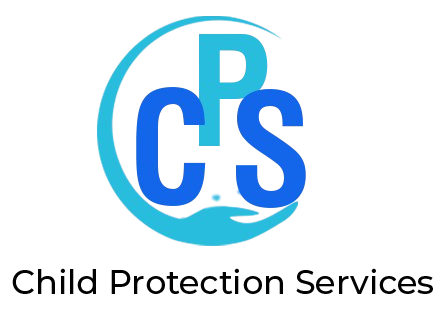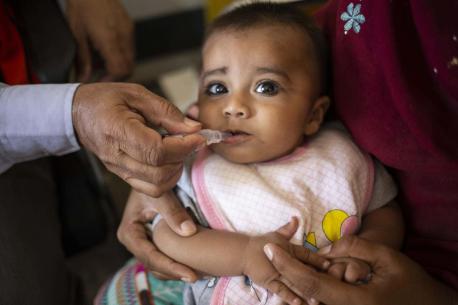Protecting children is a collective responsibility that extends far beyond the immediate family. In the United States, communities play a critical role in ensuring the safety and well-being of children. From neighbors to educators, law enforcement to healthcare providers, everyone has a part to play in creating an environment where children can thrive safely. This comprehensive guide explores how U.S. communities can come together to protect children, offering practical strategies, real-world examples, and actionable tips.
Introduction: The Collective Responsibility of Child Protection
In a world where dangers to children can come from various sources, the role of the community in safeguarding them has never been more crucial. While parents and guardians are the first line of defense, community members, institutions, and organizations can provide essential support and protection. This article delves into the ways U.S. communities can unite to prevent child abuse, neglect, and exploitation while promoting a nurturing environment for all children.
The Importance of Community Involvement in Child Protection
Why Community Matters
Children do not grow up in isolation; they are part of larger communities that influence their development. When communities are actively involved in child protection, they create a safety net that catches vulnerable children who might otherwise slip through the cracks. Community involvement also fosters a culture of accountability, where everyone takes responsibility for the well-being of children.
Key Points:
- Early Intervention: Community members are often the first to notice signs of trouble in a child’s life. Early intervention can prevent issues from escalating.
- Support Networks: A strong community provides support networks for families in need, reducing the likelihood of neglect or abuse.
- Shared Responsibility: Child protection is not solely the job of social services; it’s a shared responsibility that requires active participation from all community members.
Building Awareness and Education
Raising Awareness About Child Protection
One of the most effective ways communities can protect children is by raising awareness about child abuse, neglect, and exploitation. Education campaigns can help community members recognize the signs of abuse and understand how to respond appropriately.
Key Points:
- Public Awareness Campaigns: Local governments, schools, and nonprofit organizations can launch campaigns to educate the public about child protection.
- Workshops and Training: Community centers, schools, and churches can offer workshops and training sessions on recognizing and reporting child abuse.
- Social Media Outreach: Utilize social media platforms to share information about child protection, including warning signs and resources for help.
Educating Children and Youth
Children need to be equipped with the knowledge to protect themselves. Educating them about their rights, personal boundaries, and how to seek help can empower them to speak up if they are in danger.
Key Points:
- School Programs: Schools can incorporate child safety education into their curriculum, teaching children about personal safety, consent, and how to report abuse.
- After-School Programs: Community organizations can offer after-school programs that provide a safe space for children while educating them about their rights.
- Peer Support Groups: Encourage peer support groups where children and teens can talk openly about their experiences and learn from each other.
Strengthening Community Networks
Neighbors Helping Neighbors
Strong community networks are the backbone of child protection efforts. Neighbors can play a vital role in looking out for the well-being of children in their area. Building a sense of community where people know and care for each other can create a protective environment for children.
Key Points:
- Neighborhood Watch Programs: Establish neighborhood watch programs that include child safety as a core focus. Encourage neighbors to report suspicious activity and check in on families who may need support.
- Community Events: Organize community events that bring people together, fostering a sense of belonging and encouraging open communication among neighbors.
- Buddy Systems: Implement buddy systems where neighbors keep an eye on each other’s children, ensuring they are safe when playing outside or walking to and from school.
Supporting Families in Need
Many cases of child abuse and neglect stem from parental stress, financial difficulties, or lack of support. Communities can help by providing resources and support to families who are struggling.
Key Points:
- Parenting Classes: Offer parenting classes that teach positive discipline techniques, stress management, and effective communication skills.
- Resource Centers: Establish community resource centers that provide access to food, clothing, housing assistance, and counseling services.
- Mentorship Programs: Create mentorship programs that pair experienced parents with new or struggling parents to provide guidance and support.
Partnering with Local Institutions
Schools as a Hub for Child Protection
Schools are often the first place where signs of abuse or neglect are noticed. Teachers, counselors, and staff play a critical role in identifying at-risk children and connecting them with the necessary resources.
Key Points:
- Training for Educators: Ensure that all school staff receive training on recognizing and reporting child abuse. This includes understanding the signs of physical, emotional, and sexual abuse, as well as neglect.
- Collaborative Efforts: Schools can partner with local child protection agencies, law enforcement, and healthcare providers to create a comprehensive support system for children.
- Safe Reporting Systems: Establish anonymous reporting systems within schools that allow students to report abuse without fear of retaliation.
Law Enforcement’s Role in Child Protection
Law enforcement agencies play a crucial role in child protection, from investigating reports of abuse to preventing exploitation. Building strong relationships between law enforcement and the community can enhance child protection efforts.
Key Points:
- Community Policing: Encourage community policing strategies that build trust between law enforcement and residents. Officers who are familiar with the community are more likely to identify and address child protection issues.
- School Resource Officers: Place trained officers in schools to provide a safe environment and offer resources for students who may be experiencing abuse.
- Collaboration with Social Services: Law enforcement should work closely with child protective services to ensure that children are removed from dangerous situations and placed in safe environments.
Healthcare Providers as Frontline Protectors
Healthcare providers are often the first professionals to see signs of abuse or neglect. Doctors, nurses, and other medical professionals need to be vigilant in their efforts to protect children.
Key Points:
- Mandatory Reporting: Ensure that healthcare providers understand their role as mandatory reporters of child abuse and neglect.
- Training and Resources: Provide ongoing training for healthcare providers on recognizing and responding to child abuse. This includes understanding the physical and behavioral signs of abuse.
- Partnerships with Community Organizations: Healthcare providers can partner with community organizations to offer additional resources and support to families in need.
Encouraging Volunteerism and Community Programs
Volunteering for Child Protection Causes
Volunteers are essential to many child protection efforts. Whether through mentoring, providing respite care, or supporting local nonprofits, community members can make a significant impact.
Key Points:
- Mentoring Programs: Encourage community members to volunteer as mentors for at-risk children. Mentors can provide guidance, support, and a positive role model.
- Respite Care: Offer respite care services for foster and adoptive families, giving them a much-needed break while ensuring the children are well cared for.
- Supporting Nonprofits: Volunteer with local nonprofits that focus on child protection, whether through direct service or fundraising efforts.
Creating Community Programs for Child Protection
Communities can also develop programs specifically designed to protect children and support families. These programs can address various needs, from providing safe spaces for children to offering educational resources for parents.
Key Points:
- After-School Programs: Create after-school programs that provide a safe environment for children while their parents are at work. These programs can include tutoring, recreational activities, and mentorship opportunities.
- Parent Support Groups: Establish parent support groups where caregivers can share experiences, offer advice, and provide emotional support to one another.
- Community Counseling Services: Offer free or low-cost counseling services to families in crisis, helping them address issues before they escalate into abuse or neglect.
Empowering Children to Protect Themselves
Teaching Children About Their Rights
Empowering children with knowledge about their rights is a crucial aspect of child protection. When children understand their rights, they are better equipped to recognize inappropriate behavior and seek help when needed.
Key Points:
- Personal Safety Education: Teach children about personal safety, including the concept of consent, boundaries, and how to say no to unwanted touch.
- Open Communication: Encourage open communication between children and trusted adults. Let children know that they can talk to you or another trusted adult if they ever feel unsafe.
- Self-Advocacy: Empower children to advocate for themselves by teaching them how to recognize and report unsafe situations.
Encouraging Peer Support
Children can also protect each other by fostering a culture of kindness, respect, and support among their peers. Peer support programs can help children feel less isolated and more empowered to speak up if they or their friends are in danger.
Key Points:
- Peer Mentorship: Establish peer mentorship programs where older students mentor younger ones, creating a supportive environment.
- Bullying Prevention: Implement anti-bullying programs that promote inclusivity and teach children how to stand up for themselves and others.
- Safe Spaces: Create safe spaces within schools and communities where children can go if they feel threatened or need someone to talk to.
Conclusion: The Power of a United Community
Child protection is a collective effort that requires the involvement of every community member. From raising awareness and providing education to supporting families and partnering with local institutions, communities in the United States can unite to create a safer environment for all children. By working together, we can ensure that every child has the opportunity to grow up in a safe, nurturing, and supportive environment.
This guide has outlined various ways that communities can take action to protect children. By implementing these strategies and encouraging others to do the same, we can make a significant impact in the fight against child abuse, neglect, and exploitation.

